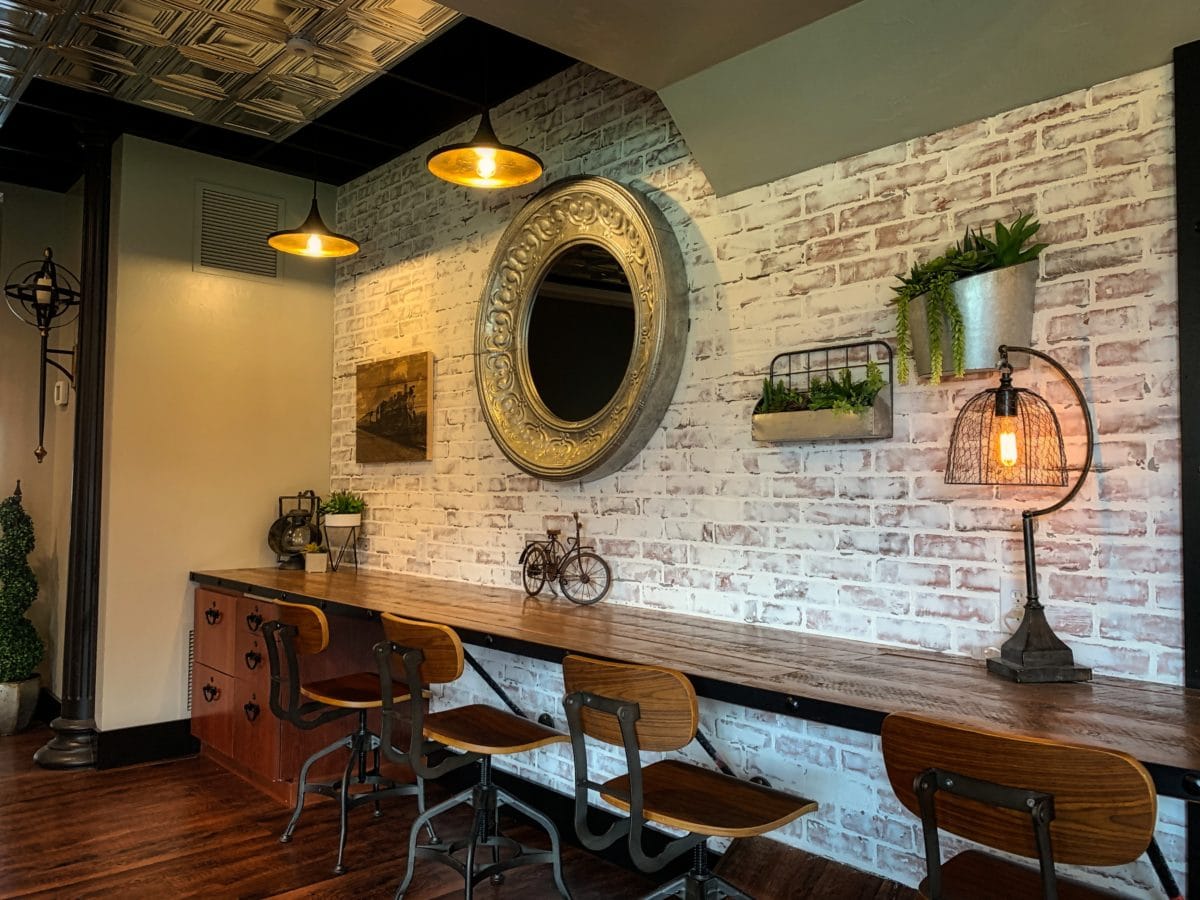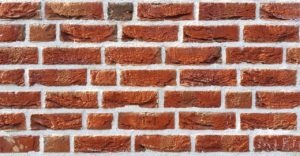Odds are, many of the brick homes you see going up around you have faux bricks. Either they are panels that go on a property’s exterior like bathroom tiles, or they’re individual faux bricks made from high-density polyurethane.
These plastic bricks are pretty impressive. But unfortunately, modern building technology means that most people won’t even notice the difference between real bricks and faux bricks.
But what are faux bricks, and are they better? Well, that depends.
For example, real bricks offer incredible temperature regulation, can last for centuries, and carry much more property value than faux bricks do.
On the other hand, faux bricks are more affordable, meaning you can have the appearance of a brick home or commercial property with a much lower price tag. It all depends on what you’re looking for or when it comes to your home or business space.
Of course, you also have other choices when it comes to imitation brick. Brick siding, for instance, is a popular exterior choice, and it’s even more wallet-friendly than faux brick.
Let’s take a look at some of the main differences between faux brick and some of the other options on the market. Then, we’ll discuss some of the benefits of faux brick and what you need to know when choosing materials for your property.
The Benefits of Brick
There are several functional advantages to brick exteriors. Most people, however, choose brick because it looks fantastic. In addition, there’s something classic and premium about brick homes, hospitals, offices, and other properties that elevate peoples’ experiences there.
If you travel to many of the nicest areas globally, many buildings and homes will be brick. They last practically forever, and they do a good job in a variety of climates.
- Weather-Resistant – Bricks are extremely durable. They stand up well to heavy rains, strong winds, and long-term sun exposure. Even in the scorching sun or consistent rain, brick takes on a unique look instead of looking worn like vinyl siding and other manufactured sidings.
- Insulation – Bricks retain heat very well. That helps in both the winter and summertime. When things are cold outside, your bricks will stay hot when the fireplace is on, or the heat is running. Likewise, bricks do a terrific job of keeping hot air out of your home. They soak up the heat and keep things cool indoors.
- Property Value – We’ve already talked a bit about how popular bricks are in higher-end neighborhoods. A brick house maintains better curb appeal for longer, and it’s an excellent investment to have if you ever sell your property. As a result, brick homes and structures are always in high demand.
Faux Brick Vs. Real Brick
One of the main drawbacks to brick is the cost. You’re going to pay a lot of money for a brick home or property. If you look closely, even many of the high-end homes going up around you right now only have brick on certain sides. Usually, homes will have brick fronts. Go around the back, though, and it’s ordinary siding. It’s a clever way to get the look of a brick house without the higher price tag.
That’s where faux brick comes in. With faux brick, you get the same great look without the cost. Here are a few reasons why faux bricks are popular.
- Customizable – With faux bricks, you avoid some limitations of natural ingredients and the challenges involved in firing genuine bricks. You can make faux bricks with different patterns, colors, and designs to fit your style preferences. If you’ve got an exciting idea for a building or landscaping project and real bricks won’t do, then faux bricks may be up for the job.
- Easy to Work With – Faux bricks are easy to work with. You can cut them faster than real bricks, and you’ll likely make fewer mistakes on a miter saw with these guys.
- They’re Lightweight – Bricks are heavy! It’s a lot of weight over the years on any home. So, if you look at older brick houses, you’ll see a lot of settling. Sometimes that’s no problem, but things can get tricky if you ever want to alter or renovate an older brick home. You don’t have to worry as much about structural integrity over time with faux brick.
- A Good Interior Option – Because they’re affordable, lightweight, and customizable, faux brick is perfect for lining a mantle, counters, and as an accent wall. Bricks, as you know, are thick. If you install bricks in your home, you’re either having to tear out drywall or lose space. Faux brick can fit your specifications.
These are just a few of the reasons why people choose faux brick. They’re also easier to hang decorations on, faster to remove, and make less of a mess! Overall, you’re trading some of the challenges that come with real brick for something that’s faster and easier to use.
How to Make Faux Bricks
You can either buy faux bricks or make them yourself. Sometimes, people make faux bricks for an accent wall or an office because they want a specific color or pattern.
It’s relatively easy to buy the tools you need to get it done. So, all we have to say is, if you’re planning on making any part of your home’s exterior faux brick, then you may want to hire a professional.
Inexperience can end up costing you because things won’t look as nice. You may regret things and have to pay someone to fix them later.
Either way, here’s some information on the faux brick-making process.
- There are faux brick templates – Yes, you can buy a faux brick template. It looks sort of like a large ice cube tray you put compound in. Once it’s dry, you can stick it to the wall and paint it when it’s dry.
- Tape & Sheetrock – If you’re trying to make faux bricks look weathered and like they’ve been there for a while, then try masking tape and sheetrock. You can map out a brick design on your wall with the tape. Ideally, use thicker tape to give your space between the “bricks.”
- Adding the Sheetrock – Then, apply the compound. Make it around ¼ to ½ inch thick.
- Peel the Tape – Take the tape off before the sheetrock dries. If you leave it on, it’s going to take some of your new faux bricks with it.
- Apply Another Layer – Once your sheetrock dries, you can go back and add more compound for texturing.
- Painting – When everything is dry, start to paint. You’ll have to get creative here. Most people paint their faux bricks red and use light grey paint to imitate joints. You can use a wet rag to wash away some of the paint or slightly smear some grey paint onto the bricks for a natural look.
Answering the Question – What Are Faux Bricks and Are They Better?
It’s about time we got down to the bottom line. What are faux bricks, and are they better?
Faux is a nice word for fake or imitation. With bricks, you get dependable material that lasts almost forever. As a result, they increase your property value and will give you fewer headaches over the years as you own and maintain your property.
From afar, and for people who aren’t looking up close at your exterior, all folks will see is what looks like bricks. So they’ll instantly think “premium” when they drive by your house or come over for a visit.
These days, faux bricks look very real. Companies are getting better and better at making faux bricks match real bricks step by step in the appearance department.
If money were no issue, then the question of whether faux bricks are better than real bricks seems silly. In almost every category, real brick wins out. They perform better, look better, and last longer.
However, what if you love brick but already own a house with siding on it and don’t have the budget for a massive brick renovation?
It’s a situation many homeowners and commercial property owners find themselves in. So how do you give your place a facelift without running into weight problems and the higher cost of brick?
In that case, faux brick is an attractive option. As we’ve said already, many homes across the country have one or two faux brick walls to make them seem like real brick. There’s no issue as long as things look nice and you like the way your home looks!
Whether you’re updating a bedroom or renovating your exterior, faux brick is worth a look for those looking solely for aesthetics.
However, you can’t really compare faux brick with real brick when it comes to performance. If you have the budget and are inclined, then real bricks are the way to go.




